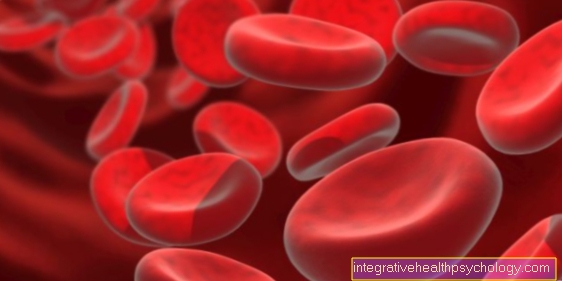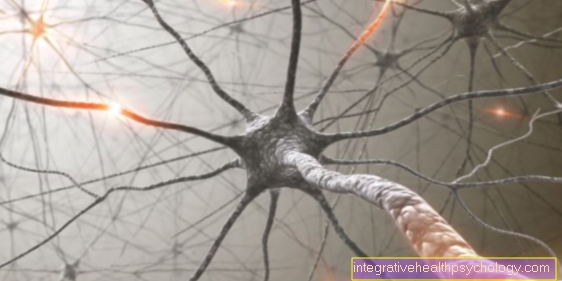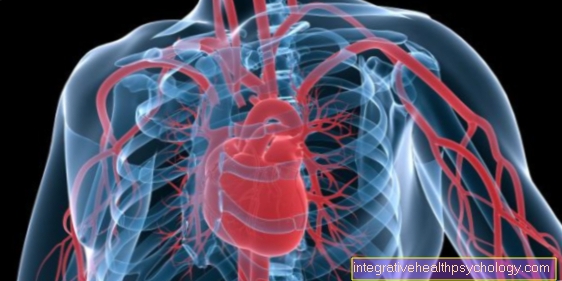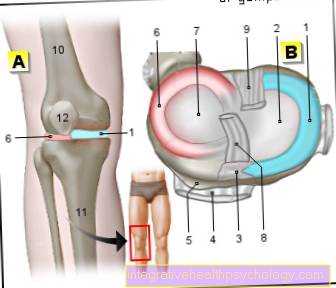Cell nucleus division
introduction
Most tissues in the body are constantly renewing themselves. This renewal is achieved through the constant formation of new cells. This new formation is achieved by the division of cells. This cell division requires that the cells are able to divide. The cells that can divide in adults are called adult stem cells. The actual division of the cell, also called cytokinesis, is preceded by the division of the cell nucleus. Most of the cell nucleus contains DNA. The DNA contains the genetic information. So that the resulting cells contain all the information, the DNA it contains is doubled before the cell nucleus divides. The process of dividing the cell nucleus is also called mitosis.

Nuclear division process
The cell nucleus division takes place in 5 phases. At the end of these 5 phases, instead of one nucleus, there are two fully functional and identical cell nuclei. In order to understand cell nucleus division, it is important that the DNA is organized in chromosomes. All of the genetic information in humans and animals is divided into several chromosomes. Humans have 2 copies of all genetic information in all cells of their body, except for egg and sperm cells. One copy from the mother and one from the father.
Overall, the DNA in the cell nucleus is divided into 46 chromosomes. Mitosis is preceded by the duplication of genetic information in the so-called cell cycle, i.e. the life cycle of a cell. Before the duplication, the chromosomes are present as one-chromatid chromosomes, after the duplication as two-chromatid chromosomes. After the cell nuclei have divided, there are single chromatid chromosomes again. This should make it clear that the genetic information is doubled before the cell nucleus divides and no information is lost.
The cell nucleus division begins with the chromosomes being packed more tightly. Actually, these are unsorted in the cell nucleus. This condensation allows the individual chromosomes to be recognized under the light microscope, which is not possible beforehand, as the chromosomes are previously unsorted and fill the cell nucleus. At the same time, the shell that surrounds the cell nuclei disintegrates. Then the chromosomes are arranged in a line by the spindle apparatus. The spindle apparatus consists of protein structures that are arranged in the form of threads, the microtubules. These protein structures can move chromosomes and arrange them in a plane for the next steps. Now that the chromosomes are correctly arranged, the two identical chromatids are pulled apart by the spindle apparatus. So now one-chromatid chromosomes have emerged again. At the end the shell of the cell nucleus is rebuilt and there are two identical cell nuclei. The cell then divides and the cell nuclei are distributed over two newly emerging cells. However, this process is not part of the cell nucleus division, but a separate step and is called cell division or cytokinesis.
Phases of cell nucleus division
The cell nucleus division can be divided into 5 phases. The phases are called prophase, prometaphase, metaphase, anaphase and telophase.
In the first phase, the prophase, mainly the condensation of the chromosomes takes place. Before this phase, the individual chromosomes cannot be distinguished from one another under the light microscope. They only become visible as individual chromosomes when they are condensed. In addition to condensation, the disintegration of the shell that surrounds the core begins.
In the next phase, the prometa phase, the nuclear envelope disintegrates completely, and the spindle apparatus also develops.
The spindle apparatus becomes important in the subsequent phase, the metaphase. In this phase the chromosomes are ordered.
The next phase is called anaphase. In this the chromosomes are separated so that 2 identical daughter chromosomes are created. In addition, the resulting chromosomes move apart.
The last phase of mitosis is telophase, in which the nuclear envelopes are restored. In addition, the condensation of the chromosomes is reversed. At the end of the telophase there are two functional cell nuclei.
You may also be interested in this topic: Tasks of the cell nucleus
Why is there nucleus division?
Nuclear division is necessary in order to create cells for tissues that are constantly renewing themselves. The body's ability to function and heal is based on the fact that dead cells can be replaced by new ones. However, there are differences in the ability to divide between the various tissues. Some parts of the body are constantly renewing themselves, including the skin or the mucous membranes and the cells of the blood. The skin and blood cells are constantly being replicated as immature progenitor cells divide. Cell nucleus division is necessary for this. However, there are also organs in the body whose cells no longer divide. This includes the heart and the brain. Since no new cells are reproduced here, damage can only be replaced by scar tissue and not by the original tissue.
How long does a cell nucleus division take?
The duration of a cell nucleus division is different for all cell types. Depending on whether the cells are dividing quickly or slowly. Mitosis can last a few minutes, but there are cells for which mitosis takes several hours. The cell nucleus divides fastest in organs in which new cells are constantly being formed. This includes the skin, the mucous membranes and the bone marrow. Blood formation takes place in the bone marrow. Cell nucleus division must therefore take place particularly quickly here.
How often do the cell nuclei divide?
The frequency of cell nucleus divisions primarily depends on how quickly the cells divide. Cell division occurs more frequently in rapidly dividing cells. In cells that divide slowly, there is a correspondingly lower number of cell nucleus divisions. It is important to note that there are cells in the body that no longer divide. These cells are called differentiated cells. These eventually die off and have to be replaced. This is the function of the progenitor cells. They can still divide and then partially become differentiated cells, which in turn can no longer divide.
What happens if the cell nucleus divides incorrectly?
There are several control points in the cell cycle that are designed to prevent errors from occurring during cell division. These checkpoints are located at various points where critical processes take place. The most critical phase in the division of the nucleus is the separation of the chromosomes. If an error occurs here, two different chromosomes can arise. The resulting cell would be defective and a tumor cell could develop. The checkpoint of mitosis is in the metaphase, the phase in which the chromosomes are arranged in a row. The way the checkpoint works is that the next step doesn't begin until all of the chromosomes are properly arranged. If an error occurs, in the best case scenario mitosis is stopped and cell nucleus division stops.
However, it can happen that errors occur at this control point. If cell nuclei with a different content of chromosomes arise, the cells can either be destroyed by the body or cells develop with a higher risk of degeneration.
That could be interesting for you too: Chromosome mutation
How does a tumor develop?
The word tumor literally means swelling and can be triggered by various processes. The most common cause of swelling is inflammation, which causes swelling from excessive water retention. A tumor caused by the unchecked proliferation of cells is also called a neoplasm. There are many different forms of neoplasm that arise from different cells. In general, neoplasms result from a loss of control over the growth and division of the cell. Cells contain various proteins that ensure that a cell does not grow out of control. These proteins can be restricted in their function due to changes in the genes that are the template for these proteins. This loss of control function leads to unchecked growth and the degenerated cells.
Read more about this: tumor





























